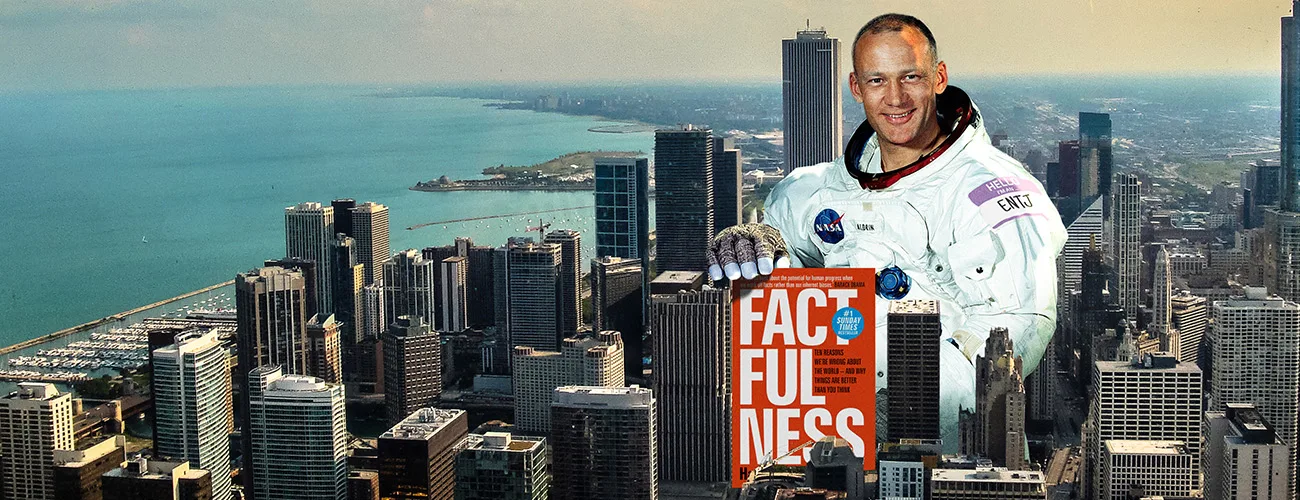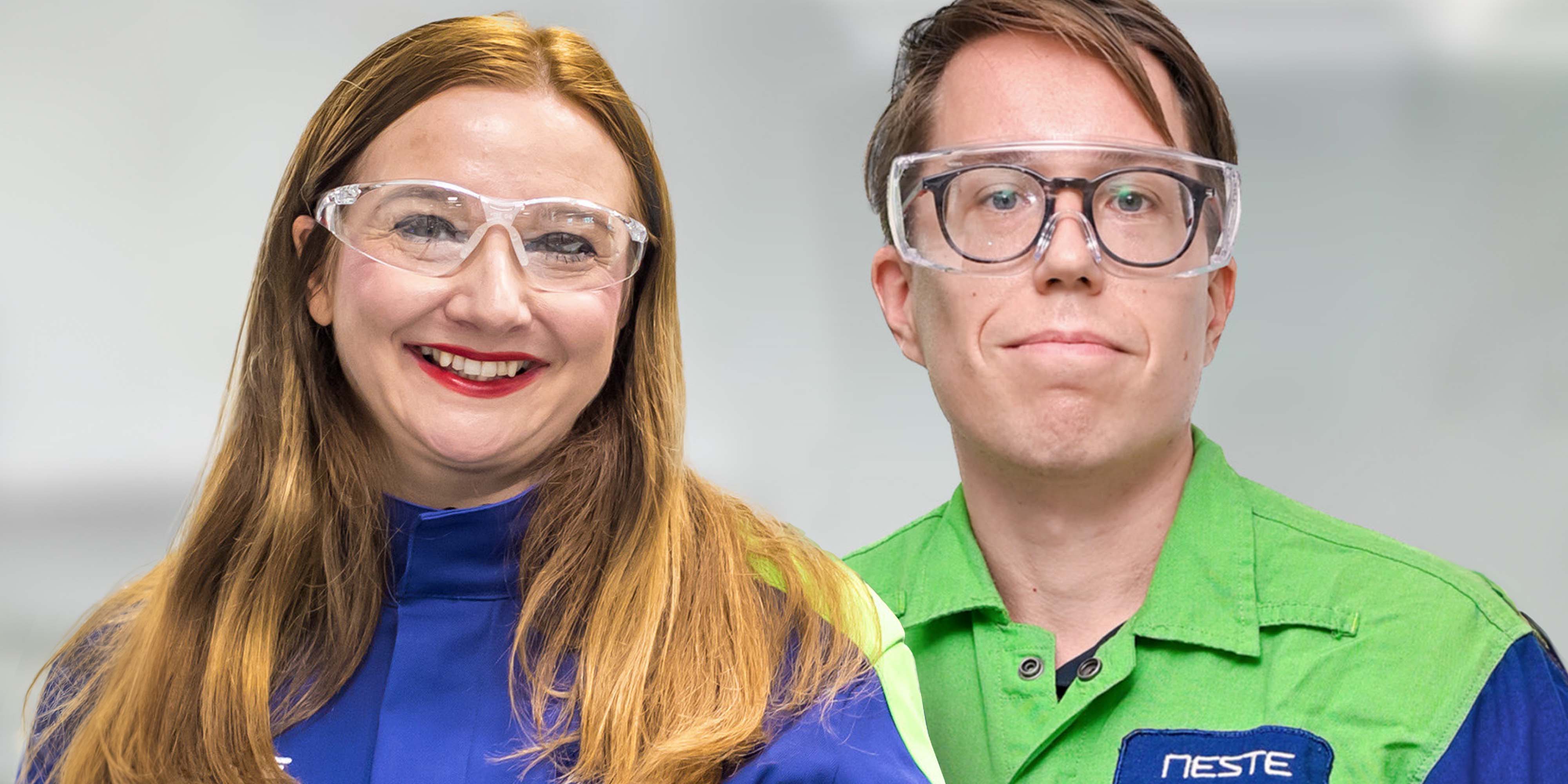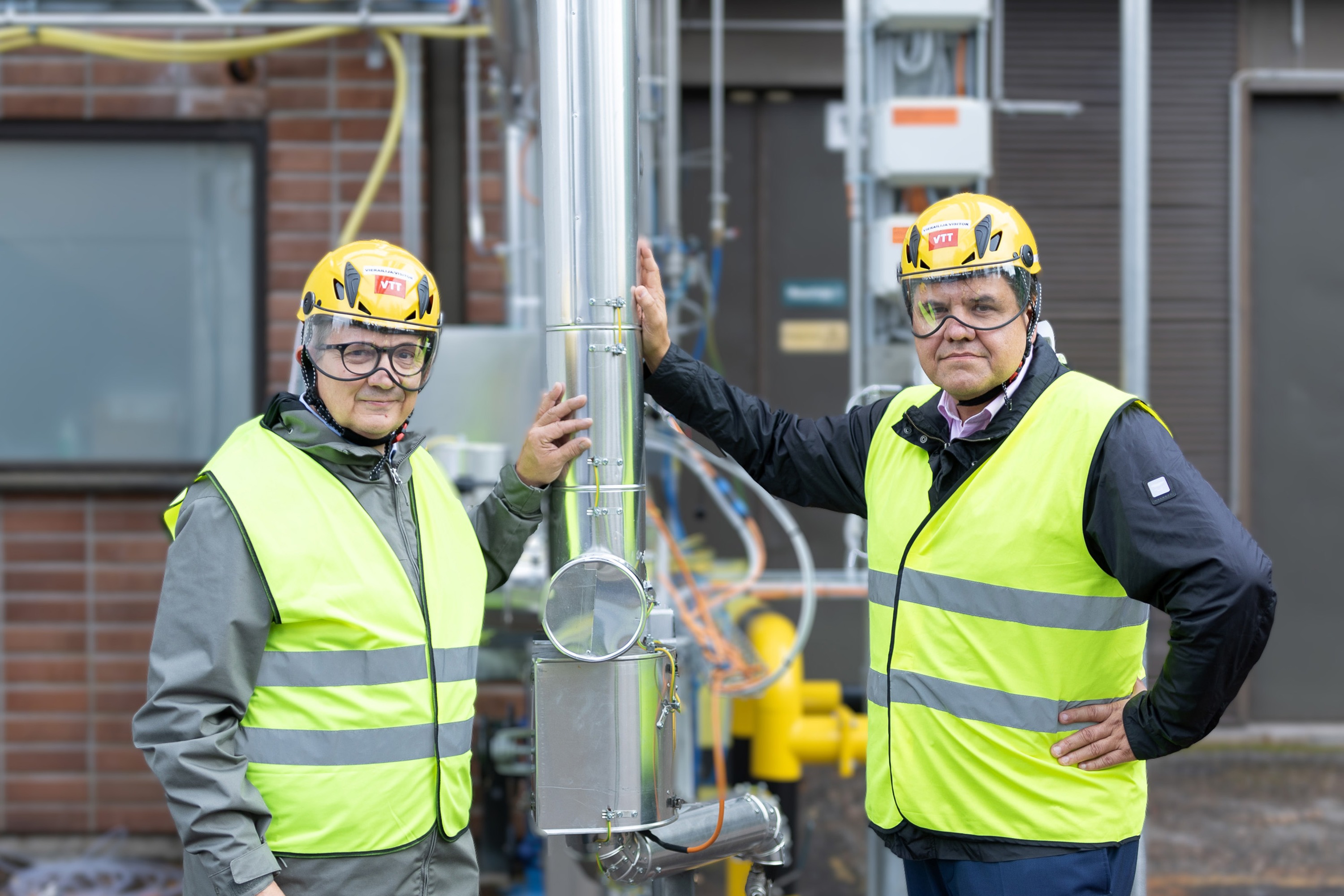
Innovation
11 minute read
How to lead sustainable innovation: 7 inspirations of the technology mastermind Lars Peter Lindfors
Lars Peter Lindfors is a guru of innovating for the future – and that future is sustainable. From the Moon landings to rural America, and Marie Curie to Nordic inventiveness, the Senior Vice President of Innovation at Neste, a world-leader in renewables, shares what inspires him in leading sustainable innovation.
Expect to learn:
How Nordic values can steer sustainable innovation
How the world’s 3rd most sustainable company builds innovation teams
What qualities a sustainability-minded innovation leader nurtures in people, culture and beyond
You never know where a conversation with Neste’s innovation head will lead. The same curiosity that has driven his 30-year-long career of solving the sustainability challenges of tomorrow at Neste and won him prestigious prizes for his leadership can take you from 19th-century science to Myers-Briggs tests, and from climate change to Amazon.com, in the blink of an eye. It’s part of what makes him a great interview – but also key to his role in stewarding R&D teams in sustainable innovation at Neste, the world-leader in producing renewable fuels refined from waste and residues, that’s also developing renewable solutions for the polymers and chemicals industries. Here, Lars Peter Lindfors takes us through the key influences from his life path. The surprise, perhaps, is that through everything – all his formative experiences, the people, places, books and companies that have inspired him – a theme begins to emerge.
1. Buzz Aldrin
“There is one person I met who changed my way of thinking in an instant: legendary astronaut Buzz Aldrin. He’s an amazing guy that I met while he was doing a PR campaign for Neste a few years ago. He was visiting the headquarters, chatting with us, followed by a Q&A session. His stories and what he and his co-pilot Neil Armstrong did together – that is something admirable. And yet, he chatted so freely. Somebody in the audience asked: ‘Weren’t you very worried? When you were on the surface of the Moon, wondering if you’ll ever get back home again?’ Because that was for sure a 50–50 chance. And what Buzz Aldrin said then still resonates with me. I have three boys, teenagers at the time. You never knew if they were coming home for the night, and so I’d worry, staying up late, waiting for them. And then, this question. Buzz’s response was: ‘Worried? No. I wasn’t. Because worry is a very unproductive state of mind.’ Then, he told us how he and Neil had solved the problems they encountered.
“Buzz Aldrin taught me that worry is a very unproductive state of mind.“
That night, I slept soundly all the way to the morning, and I never stayed awake worrying again! I mean, what would worrying help, anyway? Buzz Aldrin must be the most extraordinary person I have ever met. Even as Neil Armstrong retreated from the public eye, Buzz remained valuable and inspiring, because he would openly share his experiences and vulnerability. For 10 years now, the things he taught me have stayed with me.
2. The American Midwest in 1981
“You are quite receptive at the age of 16. For me, that’s when perhaps the most formative moment for my future arrived: a year as an exchange student in the USA. It was 1981, and I was placed in this small village close to Toledo, Ohio. It was just beneath the Great Lakes, in an area with a large Mexican and Latin American population. And here I was, arriving at 16 into a family where the mum and dad were both themselves under 30, just out of school and working their first jobs. They weren’t a wealthy family, either, but the connections I made that year changed my life.
“They allowed us to stay in one of Chicago’s slums for a week in 1981.“
For example, I made friends with a Venezuelan exchange student who was staying with a Christian organization. Through the organization’s connections, they allowed us to stay in one of Chicago’s slums for a week in 1981. For someone from a small country like Finland, from a middle-class family, you can imagine how very different that was – and how dangerous, too. My career path was guided by that year in Ohio. The experience was full of new cultural understandings – a theme that’s become strong for me since.”
3. Factfulness, written by Hans Rosling, Ola Rosling and Anna Rosling Rönnlund
“Because of my background in science, I like to base my statements on facts. I suffer in today’s world because there are so few facts and so many opinions, and people often operate accordingly. That’s why I like the book Factfulness (Flatiron Books, 2018) so much: it’s dedicated to showing the world based on facts. I find it a very good remedy for the current time. The full title is Factfulness: 10 Reasons We’re Wrong About the World & Why Things Are Better Than You Think – and that’s true! Our world is currently reduced to headlines, and often, their only job is to gather clicks. It works, and so it seems to us that wherever you look, depressing things are prevailing. In reality, the opposite is the case. Factfulness shows, calmly and with facts, that if you look at the bigger picture by any index you like – global life expectancy, health outcomes, income, girls’ education worldwide, safety – everything is going fantastically well.
“Constructiveness, and looking for solutions together, is not sensational.“
Of course, this is all too easily misinterpreted. There are injustices and wrongs, and we need to work hard on them. 2020 brought us an unprecedented challenge to tackle. Most importantly, we do have one overarching challenge, and that’s climate change. But even in that field, I have some challenges with the news focus just being on alarmism. I understand that there is a need for that style, of course. It’s a necessary wake-up call. But maybe the time is now passing for that, and we need to start focusing on how we can actually solve the problem together. What’s characteristic of our age is that social media encourages us to take opposite stances, making it seem like we should create change by having a polarizing hot take. Constructiveness, and looking for solutions together, is not sensational.”
4. The problem-solving, Nordic attitude
“Perhaps ours at Neste is a typical Nordic story, of making something wonderful from unpromising conditions. We have a red thread of technology innovation that goes way back. Back in the days when we were an oil refining company, we had hardly any exploration or production. We couldn’t make money the way the oil majors make theirs: pumping up oil from the ground, putting it in the barrels and selling it. So how could we make money through refinement alone? We did that by buying cheaper, low-quality oils and refining them into the highest-value products out there. We took Russian crude oil, which is cheap but of lower quality than the crude oil Brent Crude from the North Sea, and we were able to make such high-quality gasoline out of it in Finland that we exported it to California with high profitability. And California, already at that time, was the most demanding place on Earth in terms of environmental sustainability. We still operate with the same principle. We start with waste streams – cheaper and lower-quality renewable feedstock – and convert them by addressing them with the most competitive technology out there, the NEXBTL technology. It’s a technology that allows us to flexibly use different vegetable oils and waste animal fat as raw material. Then, we turn the feedstock into renewable hydrocarbons of the highest quality.
“We gave blood, sweat and tears for years before renewables started to bloom in 2015.“
There you see the red thread running through the last 60 years of the company, and the typical Nordic, problem-solving attitude. It’s all about an eagerness to find ways to thrive sustainably. We simply never had the abundance of crude oil to allow us to be a fat cat. That has been top-of-mind to me recently, as we’ve recruited a huge number of people over the past year. The young people joining this sustainable leader in high innovation that Neste is today often don’t have a clue of the blood, sweat and tears that we gave for years before renewables started to bloom in 2015. The table was not set for us. We started from scratch and innovated to make a path for ourselves."
5. BASF and the spirit of innovation
“I always like to look at why the things we see around us turn out the way they do – in science, in culture, and especially in company cultures. For some companies, innovation seems like a habit. They have persistence in their strategy and a desire to make new things happen. They are transformative. And why is that? Take the German chemistry giant BASF as an example: despite their huge size and many different activities, they always seem to be following their strategy and innovating. Or Amazon, also a leader in business innovation. I admire companies that have that kind of vision and persistence – putting transformation of industries into their DNA.
“If you want to be a transforming company, you cannot go from month to month.“
On the other hand, there are plenty of companies that can’t seem to innovate, no matter what. And that’s because their culture goes against it. They go tightly from quarter to quarter and only ever change slightly. If you want to be a transforming company, you simply cannot go from month to month. You need to have a long-term vision. That’s one of the reasons I’m proud of being a part of Neste. Each day, we go to work thinking not about next year’s challenges but about creating sustainable growth platforms for the 2030s.”
6. The spirit of Marie Curie
“I have always had a great interest in the mindsets of scientific pioneers like Marie Curie – of people so devoted to their field that the rewards took second place to the pleasure they took in curiosity and the desire for knowledge. For Curie, her curiosity in radioactivity was so powerful that she died as a result of exposure to the materials under her research. That’s not just dedication, but something more. She knew the risks, but her curiosity, her passion, her drive to research, were more powerful. People like her, and Nikola Tesla, were simply interested in the materials and the possibilities. Those are qualities that I see in many of the researchers in my team at Neste – that same immense dedication to their field. To me, in their mindsets, they resemble Nobel Prize winners like Curie.
“I feel immense joy in having a qualified discussion with our research teams.“
To be clear, I’m not talking about myself! My research career was short, and I have lost the touch after 26 years in executive management. Yet, I was always interested in innovation and R&D. Part of that is the same admiration for researchers that was ignited in me with Marie Curie and her contemporaries – I’m really interested in what they are doing. I feel immense joy in having a qualified discussion with our research teams, such as the team of the brilliant Ulla Kiiski that’s also behind the NEXBTL technology.”
7. Myers-Briggs and the hardest form of chemistry
“Making connections is what inspires me the most. Building the best teams and research groups is a kind of chemistry, too. It’s human chemistry, which can sometimes feel like the most difficult one! At Neste, we want to explore the most effective combination of people, with different ways of thinking, introverts and extroverts, neurodiversity and backgrounds. That’s why we implemented the Myers-Briggs tests a long time ago. I remember the first day. We had an exercise in which people of the same personality type were grouped together. The results were unbelievable. The task was to build a tower together. When the time was up, my group had five attempts and a very small tower. The other extreme – the introverts, the very detail-oriented people – didn’t even manage to start actual construction, because they were planning so carefully and not communicating much.
“I’m continually trying to make my team members grow so that they don’t need me.“
What I have realized through the years – and I have learned this unknowingly from mentorships, my good bosses from the past and my own mistakes – is that my main role is to make others succeed. Once our R&D teams have an idea that I can buy into, I want to make sure they have all they need so that they can be happy and proud of what they are doing – and get good results. This has grown with age. I realize I’m not here forever. In my own leadership team, I’m continually trying to make my team members grow so that they don’t really need me.”
Lars Peter Lindfors Born in Finland in 1964. Joined Neste as a researcher while completing his Ph.D. in chemical reaction engineering in the early 1990s. Also holds an MBA in organizational development. After shifting to a managerial career in 1995, has held various positions related to technology and innovation and led expert organizations at Neste and Perstorp Group, a chemical company formed with the merger of Perstorp and Neste Oxo in 2001. Has been a member of executive management boards at various corporations since 2001. Has been awarded as the best technology leader in Finland. In 2018, won the prestigious international Eric and Sheila Samson Prime Minister’s Prize for Innovation in Alternative Fuels for Transportation together with the core inventors of the NEXBTL technology.
Credits: Matt Potter, a British journalist, author, editor, broadcaster and scriptwriter. About Matt Potter





